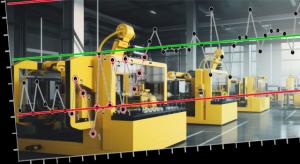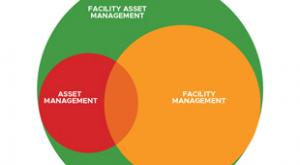All Features

Eric Whitley
Historically, manufacturing processes have often involved substantial waste. From the early days of industrialization, companies have prioritized production speed and volume over efficient resource use. As resources seemed abundant and environmental consciousness was low, excessive waste became an…

Donna McGeorge
Nano Tools for Leaders—a collaboration between Wharton Executive Education and Wharton’s Center for Leadership and Change Management—are fast, effective tools that you can learn and start using in less than 15 minutes, with the potential to significantly improve your success.
The goal
Invest your…

Scott A. Hindle, Douglas C. Fair
We are one year away from the 100th anniversary of the creation of the control chart: Walter Shewhart created the control chart in 1924 as an aid to Western Electric’s manufacturing operations. Since it’s almost prehistoric, is it now time to leave the control chart technique—that started out using…

Douglas C. Fair, Scott A. Hindle
Today’s manufacturing systems have become more automated, data-driven, and sophisticated than ever before. Visit any modern shop floor and you’ll find a plethora of IT systems, HMIs, PLC data streams, machine controllers, engineering support, and other digital initiatives, all vying to improve…

John Davis
Over the past decade, one of the biggest advances in enterprise resource planning (ERP) has been the ability to communicate and integrate with machines and external software programs to lower costs and increase efficiency. For example, BOM Compare software can reduce engineering costs and get jobs…

Ramūnas Berkmanas
Imagine a manufacturing world where machines seamlessly collaborate with artificial intelligence (AI) to ensure flawless quality inspection. It’s a future that holds immense potential for revolutionizing the industry.
Major manufacturers like FANUC, ABB, and KUKA AG, alongside specialized cobot…

Harish Jose
Today I’m looking at some practical suggestions for reducing sample sizes for attribute testing. A sample is chosen to represent a population. The sample size should be sufficient to represent the population parameters such as mean and standard deviation. Here we’re looking at attribute testing,…

Chandrakant Isi, Francesco Rivalta
You’re in an early-stage hardware startup or a tinkerer in a toolshed with a product design set to shake up the market. Not sure how to turn your idea into a product? Here’s a step-by-step guide to the product development journey. From the initial design sketched out on paper to the final product…

Bruce Hamilton
I’ll admit it: After five decades watching U.S. companies turning to simplistic accounting tricks to remain profitable, I’m discouraged.
I was a kid when I first discovered the Toyota Production System (TPS). My eyes were opened to the immense amount of waste in our production and business…

William A. Levinson
The difference between common (or random) cause and special (or assignable) cause variation is the foundation of statistical process control (SPC). An SPC chart prevents tampering or overadjustment by assuming that the process is in control, i.e., special or assignable causes are absent unless a…

Mike Figliuolo
Meetings give me a rash. A really bad one. One that not even calamine lotion can soothe. The only things worse than meetings are reports. Standard daily reports, weekly reports, hourly reports. Reports on the status of reports. If I wasn’t already insane, these things would drive me insane.
Take a…

Daniel Marzullo
If you could experience the perfect workday, what would you be doing? Have you ever taken the time to think about it?
Whether you’re an entrepreneur climbing the corporate ladder or you’re selling donuts out of the back of your car, it’s essential to pause and reflect periodically on the work you…

William A. Levinson
Inflation is a serious national issue. Credit agency Fitch Ratings just downgraded the U.S. credit rating—as in the “full faith and credit of the United States”—from AAA to AA+.1 This doubtlessly reflects the fact that our national debt exceeds $31 trillion, or almost $100,000 for every American,…

Mark Graban
I can’t count how many times during the past 20 years I’ve heard executives complain that their people aren’t enthusiastically participating in their lean program. Leaders lament that while the company has spent a small fortune to put everybody through continuous improvement training, hardly…

Donald J. Wheeler
As we learned last month, the precision to tolerance ratio is a trigonometric function multiplied by a scalar constant. This means that it should never be interpreted as a proportion or percentage. Yet the simple P/T ratio is being used, and misunderstood, all over the world. So how can we properly…

Matthew M. Lowe
Let’s start with a definition of Industry 4.0, keeping in mind that we’re rapidly approaching Industry 5.0. Industry 4.0 is an era marked by enhanced digitization and the increased connectivity of smart technologies. Where Industry 5.0 is more values-driven, it will require the technology of…

Chandrakant Isi
An increasing number of engineers are embracing design for manufacturing (DFM) to streamline their production workflow. Industry leaders such as Apple, GE, and Samsung have already adopted DFM as part of their standard practices. If you’re using the “over the wall” engineering strategy—one where…

Harish Jose
The success run theorem is one of the most common statistical rationales for sample sizes used for attribute data.
It goes in the form of:
Having zero failures out of 22 samples, we can be 90% confident that the process is at least 90% reliable (or at least 90% of the population is conforming).
Or…

Polina Marinova Pompliano
Mental toughness is a quality that sets extraordinary individuals apart from the rest, enabling them to endure discomfort and uncertainty for extended periods. But what exactly is mental toughness? Can it be achieved without undergoing severe stress and trauma? Why do some people seem to possess it…

Bruce Hamilton
Peter Drucker, celebrated by BusinessWeek magazine in 2005 as “the man who invented management,” is credited with a concept that has created confusion for me throughout my work life: the distinction between knowledge work and manual work.
In his 1959 book The Landmarks of Tomorrow (latest edition…

Ujjwal Parwal
Risk analytics is a vital component of risk management that uses statistical models, data analysis, and predictive modeling techniques to assess, quantify, and mitigate risks in various domains. This article will delve into the definition of risk analytics, discuss its importance, and explore its…

Bryan Christiansen
Creating a well-run facility isn’t as simple as it appears. It requires meticulous planning, dedicated resources, and a keen eye for detail to ensure that all elements, from the largest machines to the smallest fixtures, function as intended.
All these aspects fall under the umbrella term of…

Gleb Tsipursky
Hybrid employees don’t hate the office; they hate commuting to it, surveys show, since for many workers commuting takes more than an hour per day and costs thousands of dollars per year. Peer-reviewed studies find clear associations between longer commute times and lower job satisfaction, increased…

Jones Loflin
One of the things I hear from many people is they want to improve their ability to focus. If they just had a distraction-free environment, they could get the right things done. Well, I’m writing this from a distraction-free environment—one of those booths they have at airports where you can make…

Ethan Mollick
Nano Tools for Leaders—a collaboration between Wharton Executive Education and Wharton’s Center for Leadership and Change Management—are fast, effective tools that you can learn and start using in less than 15 minutes, with the potential to significantly affect your success.
The goal
Adopt a seven…